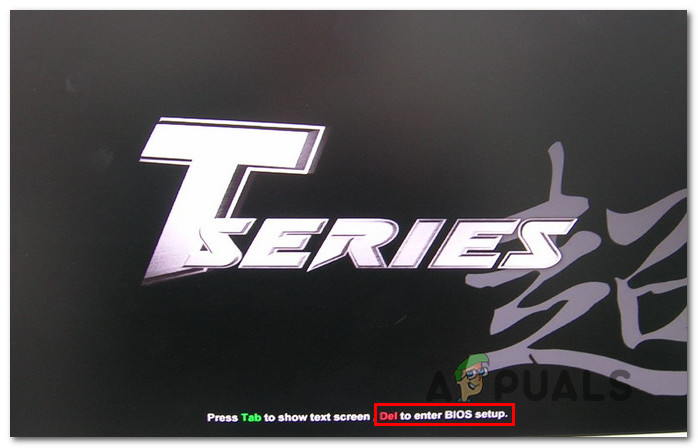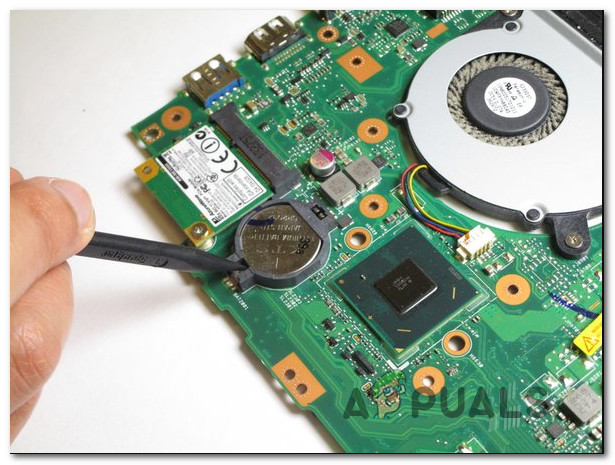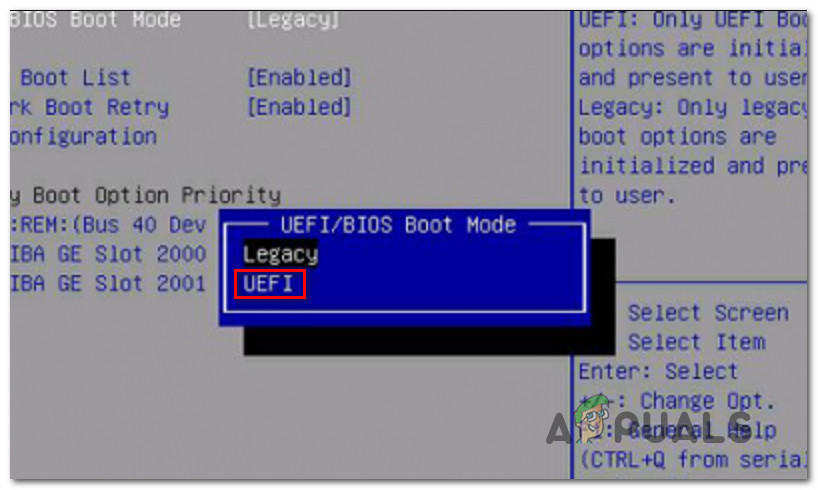What is UEFI?
Both BIOS (Basic Input/Output System) and UEFI (Unified Extensible Firmware Interface) are low-level software menus that will start when you boot your PC (before the sequence of booting your Operating System). But the difference between the two is, UEFI is a more modern solution – it supports graphics, mouse cursors, more security feature, faster boot times, larger hard drives and the list can go on. There’s no way to switch to a UEFI firmware if your computer only supports BIOS. However, most new computers will include UEFI. And even more, most UEFI implementations will support backward BIOS emulation (if you’re more familiar with the old menu).
What is causing UEFI Setting to disappear from Windows 10?
We investigated this particular issue by looking at various user reports and the repair strategies that affected users have deployed in order to resolve the issue and get the UEFI Setting back. Based on what we gathered from our investigations, the are several common scenarios that will trigger this particular problem: If you’re currently struggling to resolve this particular issue on Windows 10, this article will provide you with several troubleshooting steps. Down below, you’ll find a collection of methods that other users in a similar situation have used to resolve the problem. For the best results, we advise you to follow the methods below in the order that they are presented in since they are ordered by efficiency and severity. As long as UEFI is supported on your system, one of the methods below is bound to resolve the issue regardless of the scenario you’re in.
Method 1: Verifying if the computer is equipped with UEFI
Before you follow other repair strategies, it’s important to be 100% sure that your computer has the necessary UEFI firmware to open the settings menu. If you’re dealing with an older computer (with an older motherboard), chances are UEFI firmware is unavailable and the only supported BIOS Mode is Legacy. To determine if this is true or not, you can run the MSINFO utility to find out the BIOS Mode inside the System Information screen. Here’s a quick guide on how to do this:
Method 2: Bypassing the Fast Startup function
If Fast Startup is turned on on your Windows 10 computer, chances are every time you start your computer up after doing a regular shutdown your computer will bypass the delay in BIOS/UEFI that allows you to enter the menu. If this is the culprit that’s stopping you from accessing your UEFI settings, one way to go around preventing this from happening is to force a normal startup that will shut down the computer to the absolute power off state. Here’s a quick guide on how to do this: If the issue was being caused by the Fast Startup feature, this procedure should have allowed you to access your UEFI settings. In the event that you want to make UEFI accessible permanently or this method wasn’t applicable, move down to the next method below.
Method 3: Disabling Fast Startup
If the method above has confirmed your suspicions that Fast Startup is causing this particular issue, you can disable the feature for good to make the UEFI menu accessible at all times. But before doing this, you’ll need to know that disabling the fast startup feature will mean longer booting up times. If you’re prepared for that, here’s what you need to do to disable fast startup: If this method didn’t allow you to regain access into your UEFI settings, move down to the next method below.
Method 4: Clearing the CMOS (if applicable)
Another possible reason why you might be having trouble accessing your UEFI settings is due to a BIOS/UEFI feature called Extra Fast Startup. This option will shave off a couple of good seconds from the overall startup time by disabling everything that is not essential to the bootup procedure – on some computers, this option will also disable keypresses during the bootup sequence, which will effectively disable the ability to access the UEFI menu again. If this particular scenario is applicable, you can work-around the problem by clearing the CMOS (Complementary Metal-Oxide Semiconductor) battery. Here’s a quick guide on how to do this: Note: The steps below are only applicable to desktop PCs. Replicating this issue on a laptop is far more complicated since you’ll have to take everything apart until you reach the motherboard. If you’re still encountering the exact issue, move down to the next method below.
Method 5: Creating a Boot to UEFI Firmware Shortcut
Another way of forcing your system to boot into the UEFI Firmware settings menu is to create a shortcut capable of making your PC boot directly into that menu. Several affected users have reported that this procedure allowed them to finally access the UEFI Firmware settings menu. Here’s a quick guide on how to do this: To use the shortcut, simply double-click on it. After granting access at the UAC (User Account Control), your computer will restart directly into the UEFI settings menu.
Method 6: Reinstalling Windows 10 with UEFI enabled
If you’ve come this far without a result, chances are you didn’t install Windows 10 via UEFI. UEFI needs to be enabled when you do a clean installation of Windows 10 because it will tell your OS to use this mode instead of the legacy BIOS. If that’s the case, one way to convince your system to use the newer UEFI menu is to use a utility capable of converting your MBR drive to GPT – you can follow this article (here) to do this. Or, if you want to start from scratch, access your BIOS settings and make sure that the Boot Mode is set to UEFI and save the changes before you exit. Once UEFI is enforced as the default boot mode, use this article (here) to clean install Windows 10. Once the installation is complete, your computer should be able to access the UEFI firmware settings normally.
Fix: System Found Unauthorized Changes on the Firmware, Operating System or UEFI…SOLVED: This PC has an unsupported disk layout for UEFI firmwareHow to Convert UEFI to Legacy BIOS on Windows (7, 8 and 10)Microsoft Windows Defender System Guard Will Now Protect System Integrity At The…







